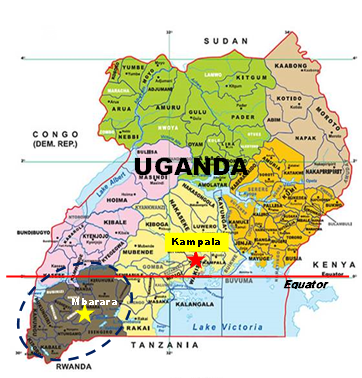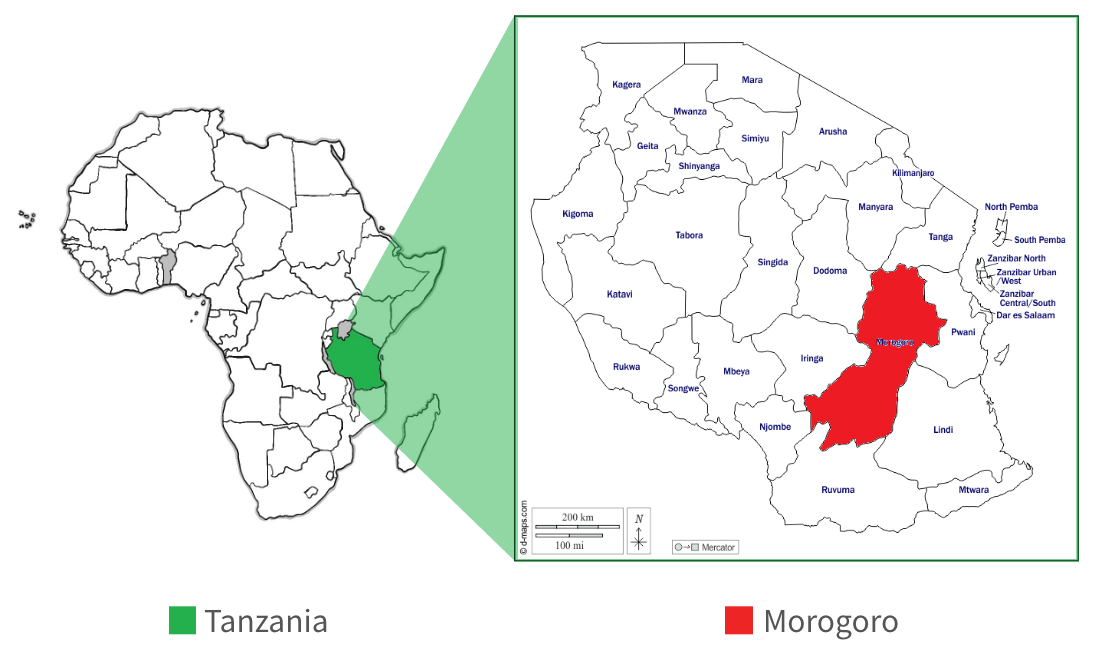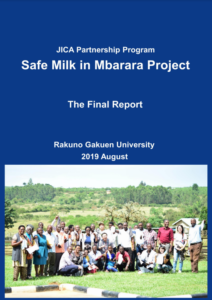International Extension and Research
NEWS
Project
Safe Milk Promotion in Mbarara Project (2016-2019)
Although the share of milk production in the area is the largest in the country due to improved genetic resources of cattle, favorable climate, and the history of development efforts, current production is far lower than the potential ability. The reason for the low production is that there is insufficiency of inputs such as suitable feed plan and biosecurity measures, due to lack of technical extension service and thus knowledge among farmers.
Rakuno Gakuen University, the previous JICA project operated in Uganda between 2010 and 2014, and dairy farmers in Mbarara identified three main key animal health problems: (1) dairy hygiene, (2) ketosis and repeat breeding, and (3) tick borne diseases in February 2015, although brucellosis was another great concern.
The Safe Milk Promotion in Mbarara Project started in 2016 October for three years to tackle with these three problems by every three months regular visits to 30 selected dairy farmers in Mbarara District (Photo 1). The participating farmers started record keeping on dairy production, reproduction, tick control and treatment using the recording format provided by the project. Diagnostic services are provided using the established laboratory in Mbarara District Veterinary Office, which is the counterpart institution for the project. Uganda Crane Creameries Cooperatives Union (UCCCU) mobilizes not only participating farmers but also cooperatives and the member farmers for the active participation for the project (UCCCU has 18,000 member farmers in Uganda). Dairy Development Authority (DDA) collaborates in the improvement and assurance of ordinal milk quality tests. Rakuno Gakuen University sends experts to Uganda, and provides technical training in the country, as well as in Japan. Makerere University provides diagnostic service on East Coast Fever and tick acaricide resistance. Obihiro University of Agriculture and Veterinary Medicine is also involved in the technical assistance for the tick borne disease research.

Map of Uganda showing the locations of Mbarara and Kampala, the capital city.
The change in awareness of the problems and importance of record keeping is already observed among participating farmers. UCCCU will play an important role in diffusing this evidence-based dairy development regimen from 30 participating farmers to more farmers in the district, and beyond to entire country. Extension officers of UCCCU and district veterinary officers will be trained by this project for sustainable dairy development in Uganda.
Improving safe dairy production in Uganda by JICA/JOCV volunteers (2019-)
Rakuno Gakuen University (RGU) and Japan International Cooperation Agency (JICA) signed an agreement for the
project improving safe dairy production in Uganda on 21st August 2019.
This project was developed to enhance the diffusion of the dairy techniques which achieved 20% increase of dairy
productivity in 30 dairy farms in the ‘Safe Milk Promotion in Mbarara Project’ operated between 2016 and 2019, to
wider areas, and to improve dairy production further. Dairy industry in Uganda not only provides nutrition to the
population, but also is an important export industry. RGU sends the students, graduate students, alumni, academic
and support staff to Uganda for this project as Japan Overseas Cooperation Volunteers (JICA/JOCV).
Initially, dispatch of JICA/JOCV was planned to be in 2020. However, due to the pandemic of COVID-19, the training
and dispatch had been postponed. Recently the program resumed, and in January 2022, a veterinary volunteer, Dr.
Taku Shimada, and in March 2022, an animal husbandry volunteer Ms. Momoko Watanabe, started the activities in
Mbarara District Veterinary Office.
Activity report
JICA/AMED SATREPS(2024-2029)
Co-designing Neglected Zoonosis Intervention through One Health, Education, and Public-private Partnership (OHEPP-SATREPS)
Project Overview
This project, being implemented over five years from 2024 to 2029, is supported by AMED (Japan Agency for Medical Research and Development) and JICA (Japan International Cooperation Agency) as part of the Science and Technology Research Partnership for Sustainable Development program (SATREPS).
Overall Goal
The goal is to have strengthened control approaches for brucellosis and zoonotic tuberculosis in Morogoro Region, Tanzania within 5 to 10 years of the project’s completion.
Project Goal
By the end of the project, the goal is to have established a brucellosis and zoonotic tuberculosis control approach based on One Health, education, and public-private partnerships in the intervention areas of Morogoro Region.
Background and Aims
Brucellosis is one of the most widespread zoonotic diseases in the world, with more than 500,000 new cases occurring worldwide each year. In humans, the disease causes prolonged undulating fever and arthritis, resulting in labor loss. In livestock such as cows and goats, abortions and reduced milk production cause significant economic losses. Ten million people are infected with tuberculosis each year, of which 150,000 are infected with zoonotic tuberculosis caused by Mycobacterium bovis. Humans become infected with zoonotic tuberculosis through the consumption of dairy products, etc. Cattle infected with bovine tuberculosis experience reduced milk production, impairing productivity.
Many developed countries have eliminated both diseases through bans on the sale of unpasteurized milk, brucellosis vaccination of animals, and the culling of animals that test positive. Brucellosis and bovine tuberculosis are designated by the World Organization for Animal Health (WOAH), but are not included in the World Health Organization’s (WHO) list of neglected tropical diseases (NTDs). The WHO has designated these diseases as “forgotten and neglected zoonoses” and recommends integrated control of both diseases. The reasons these diseases remain unaddressed in endemic countries include the lack of One Health across multiple sectors, including health and agriculture; insufficient human and economic resources; and a lack of awareness among livestock keepers, consumers, and governments about the damage and causes of the diseases.
This research aims to contribute to solving global problems by promoting One Health (interdisciplinary collaboration across multiple sectors, including health and agriculture), education, and public-private collaboration through simulations in virtual space that combines cyberspace and physical space, thereby integrating infectious disease, socioeconomics, and human ecology to combat zoonotic diseases, which have been neglected due to insufficient public resources, inter-sectoral collaboration, and recognition of the true damage.
Project Site
Morogoro Region, Tanzania (approximately 200km west of Dar es Salaam)

